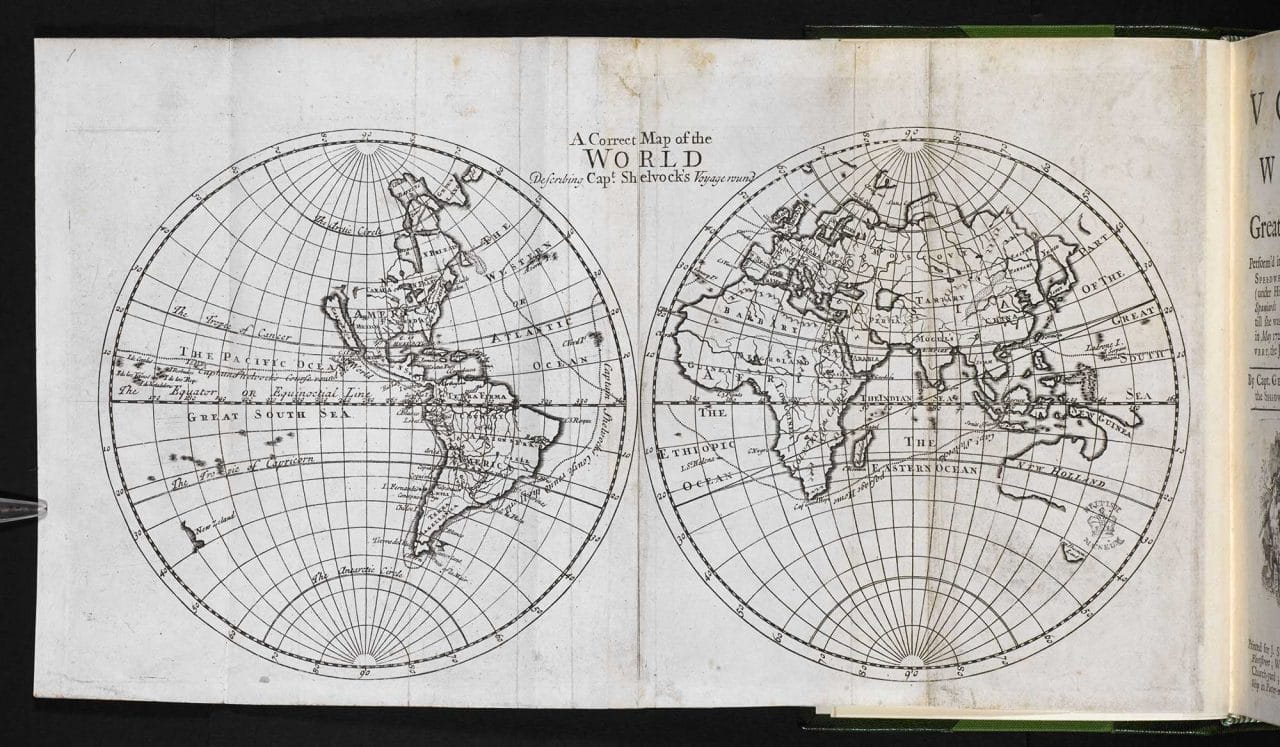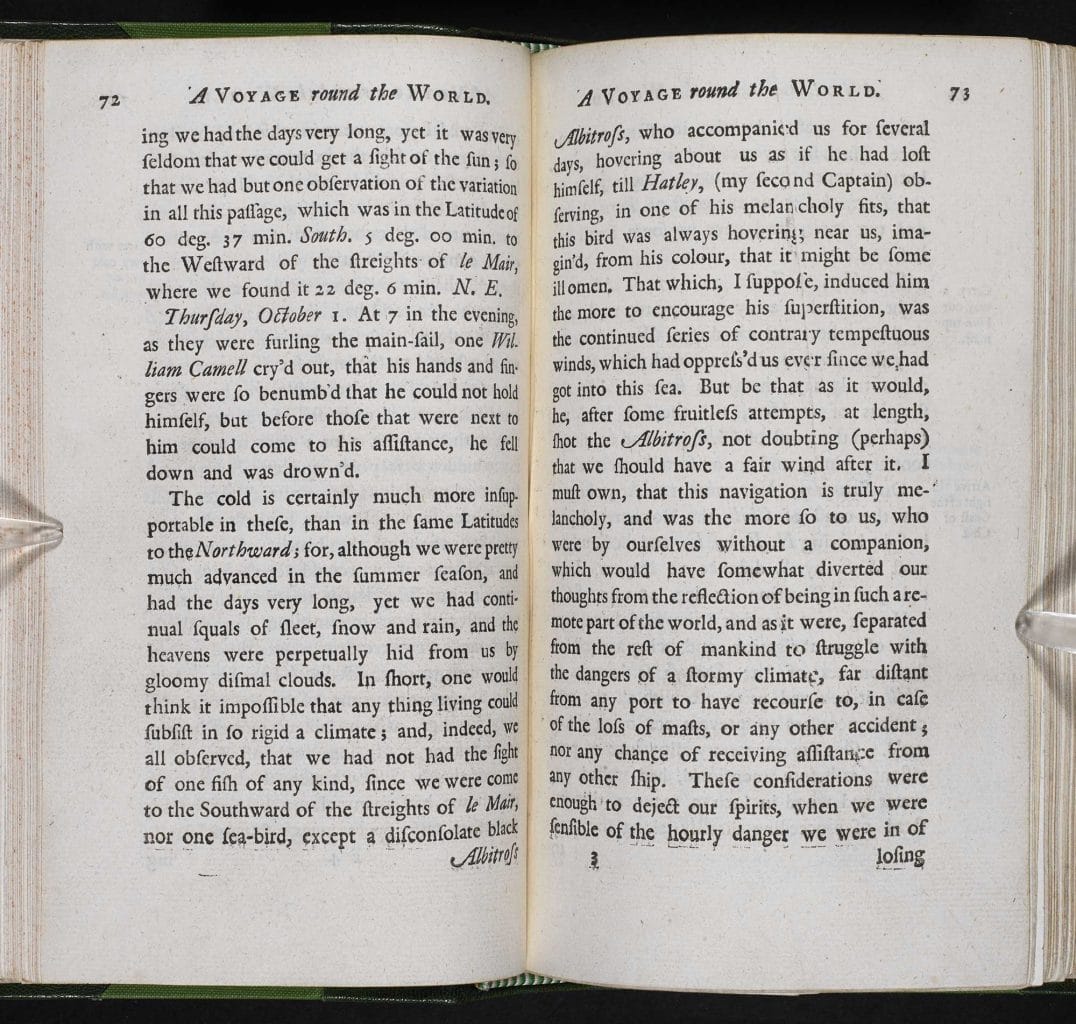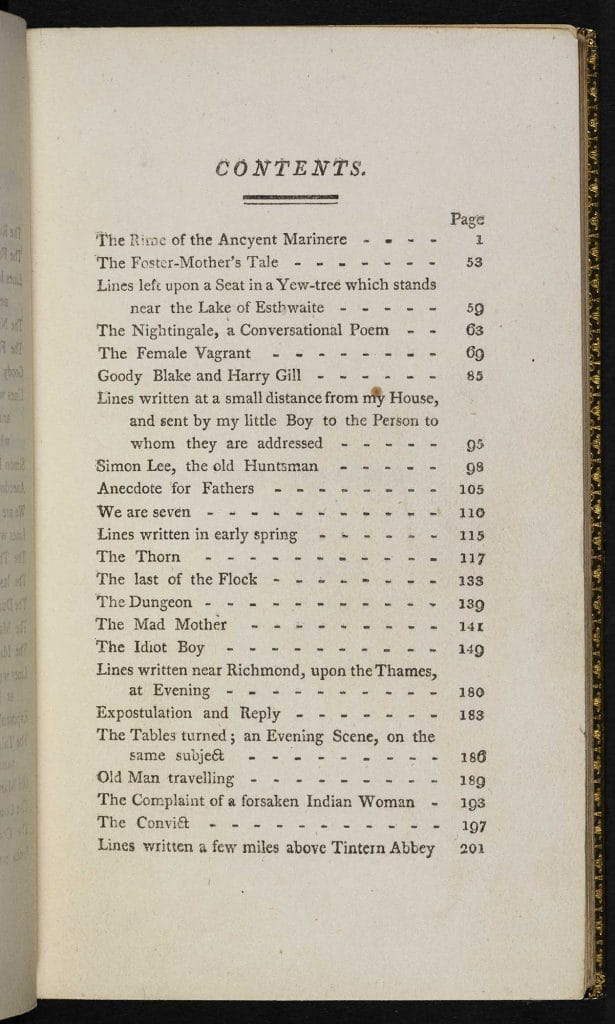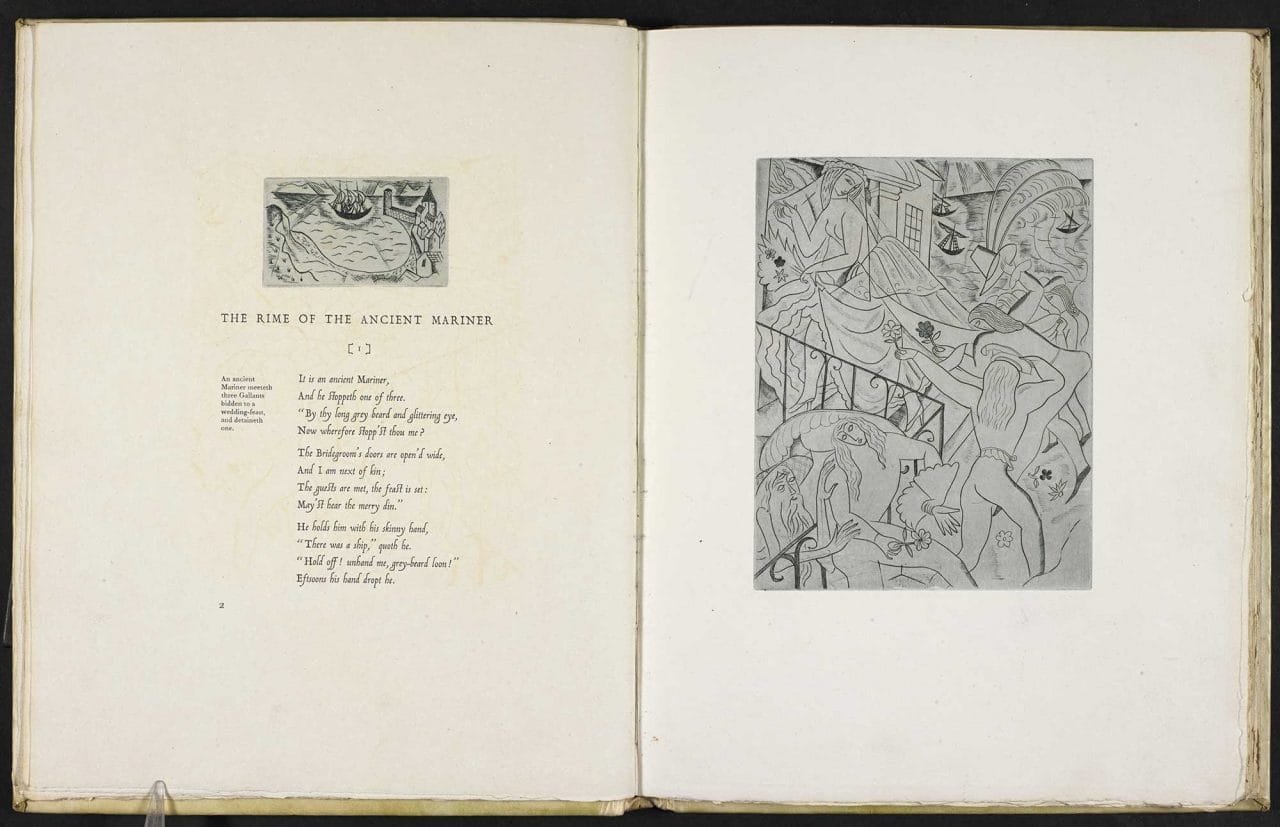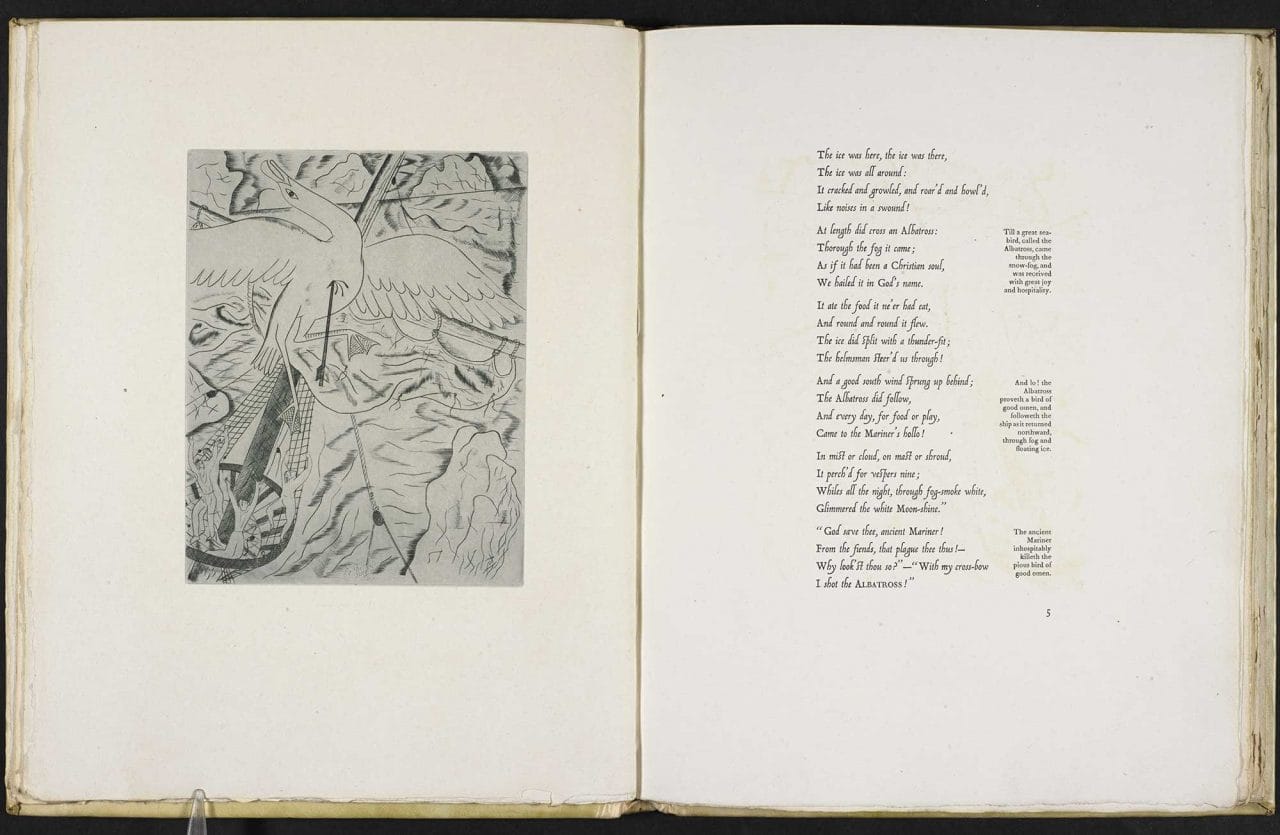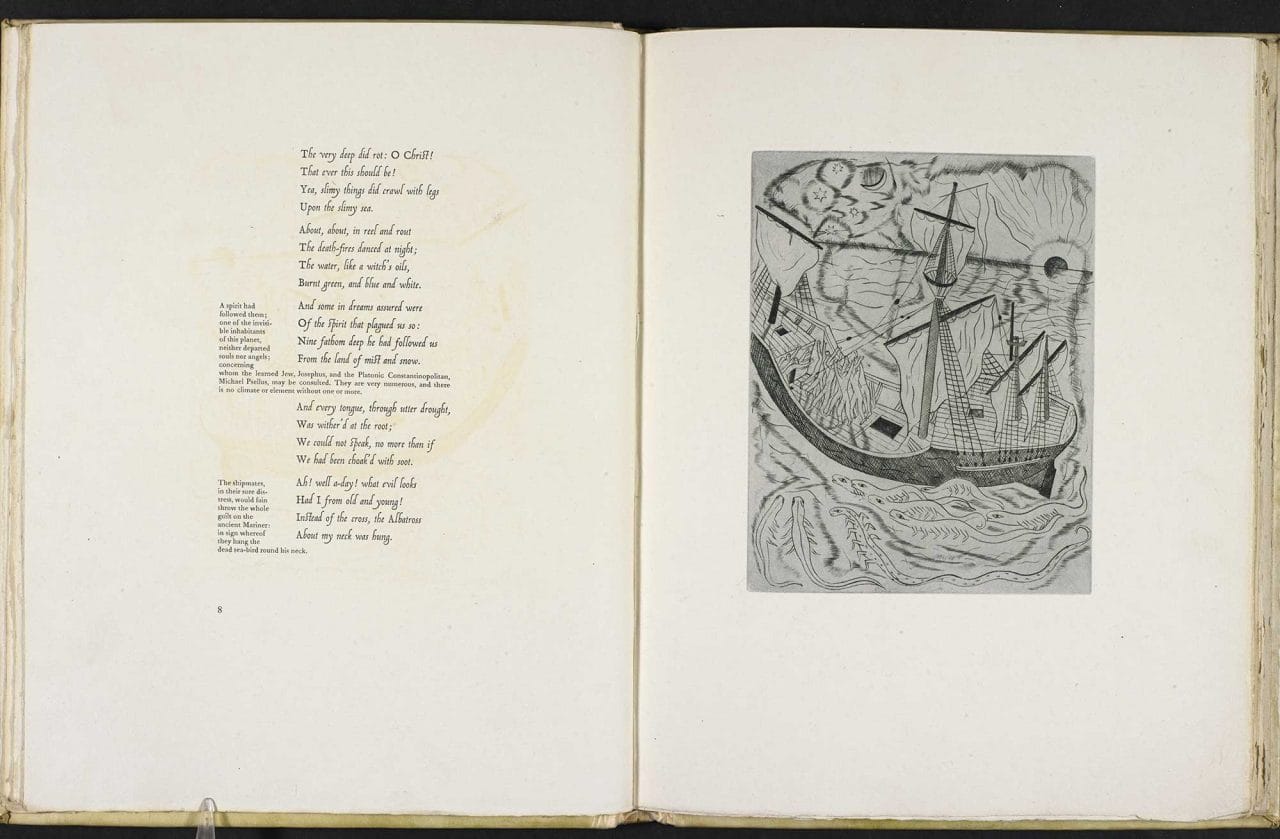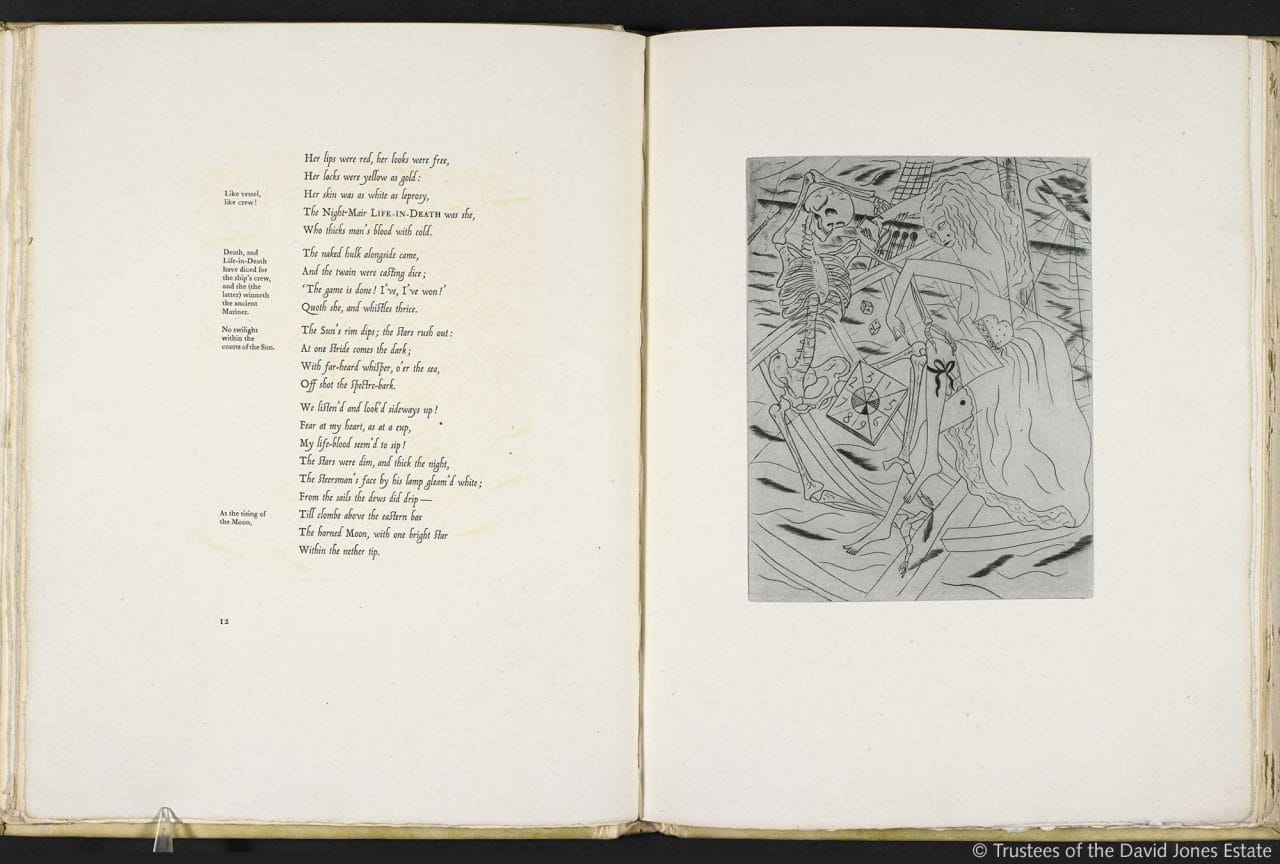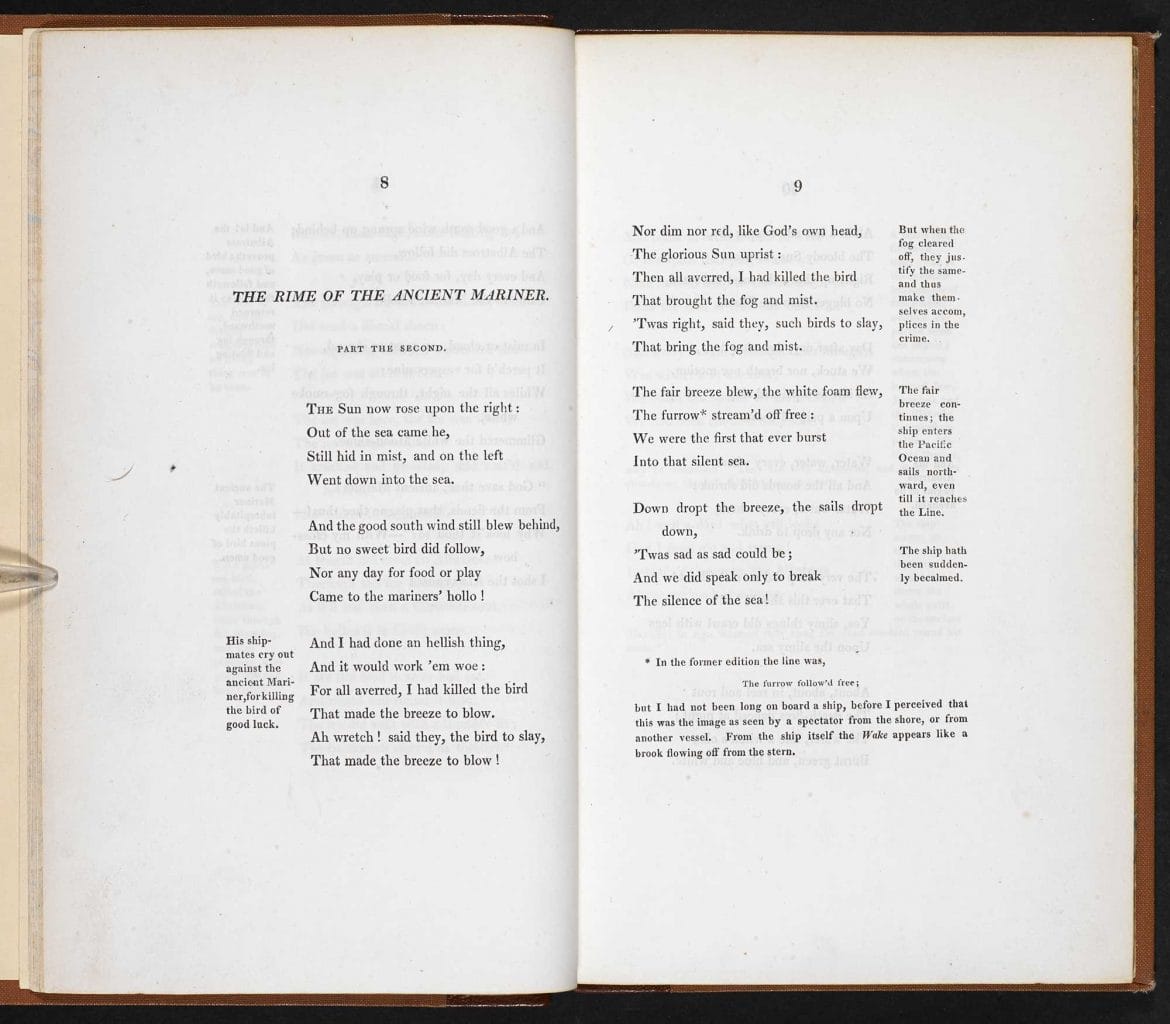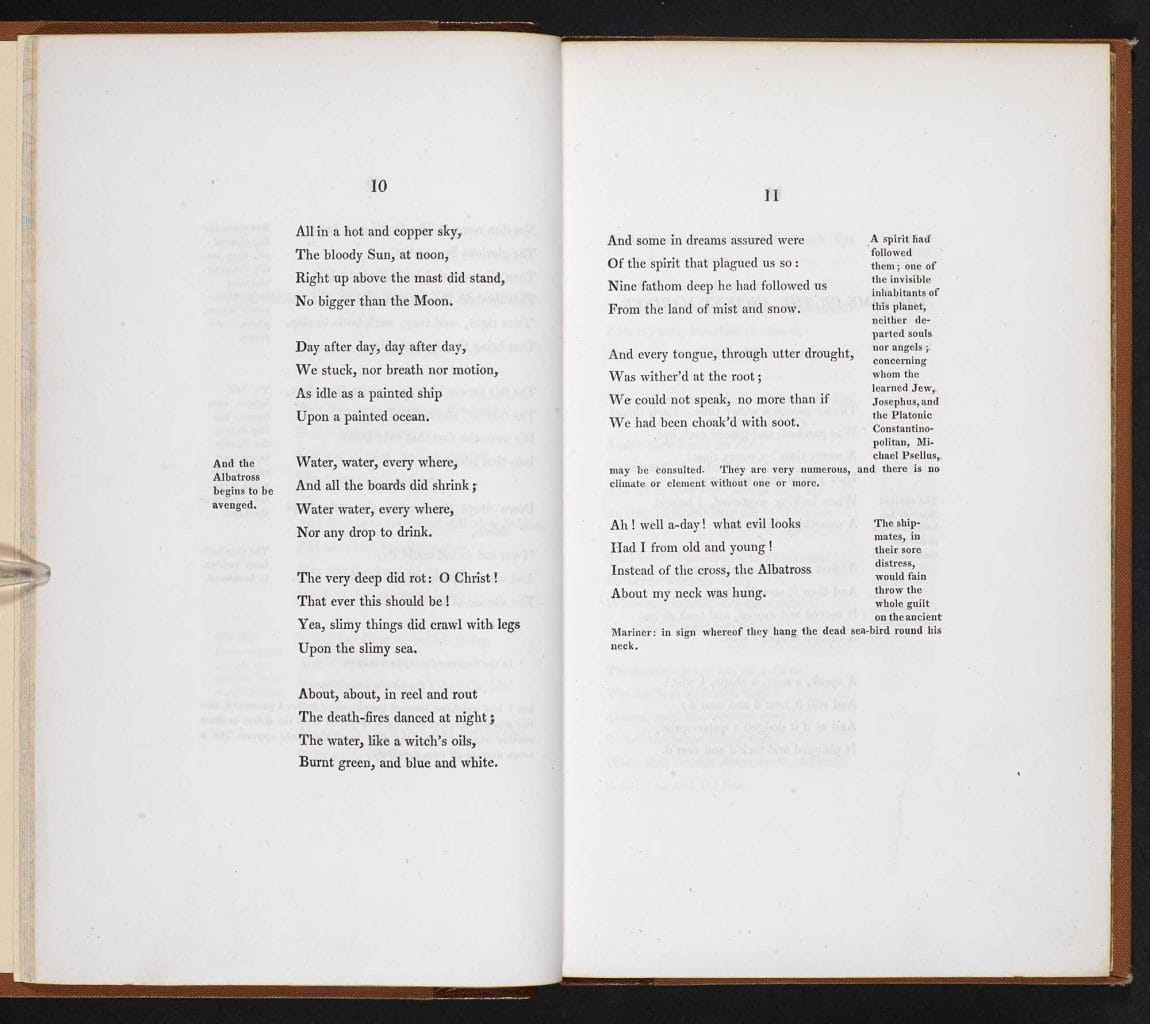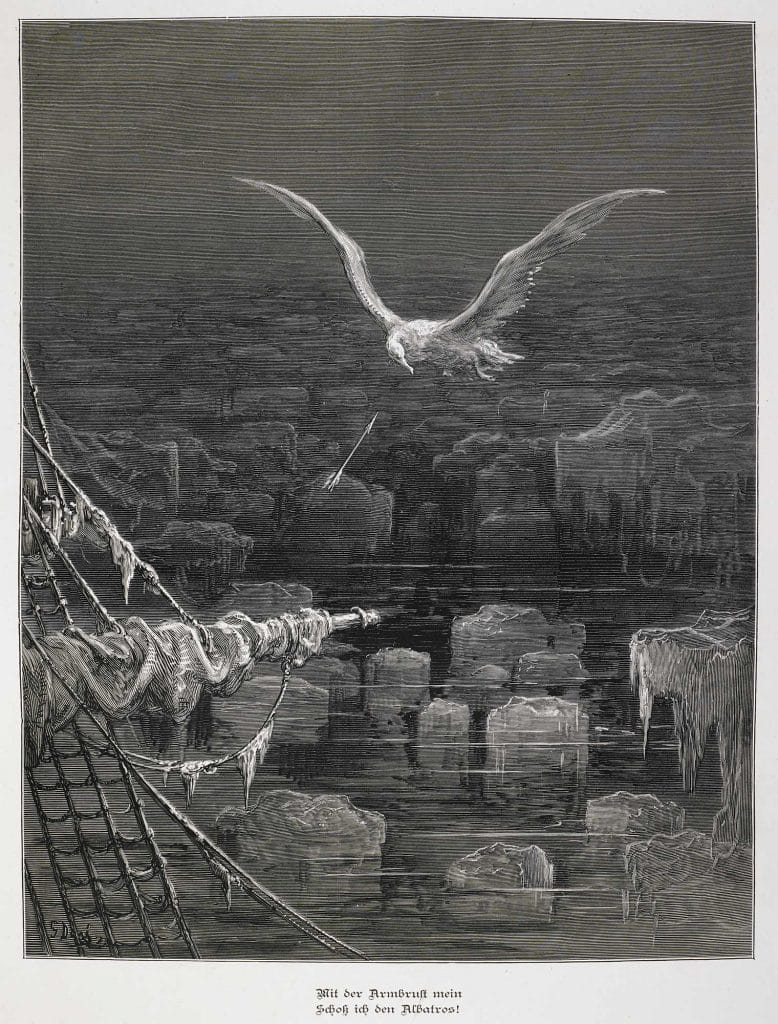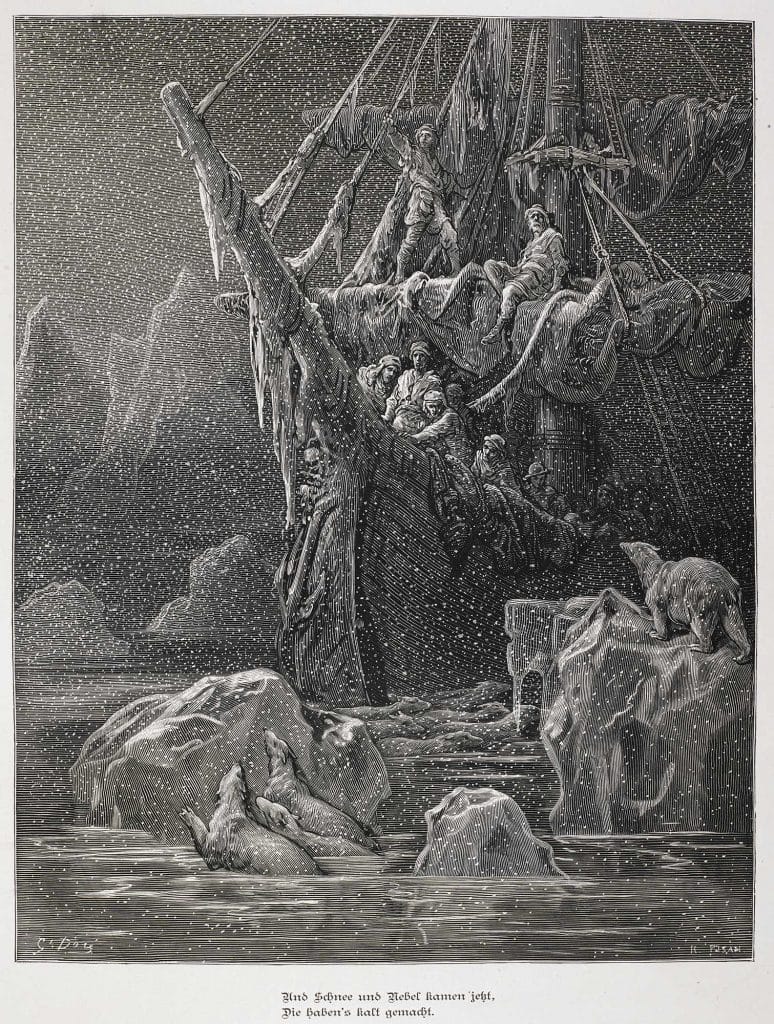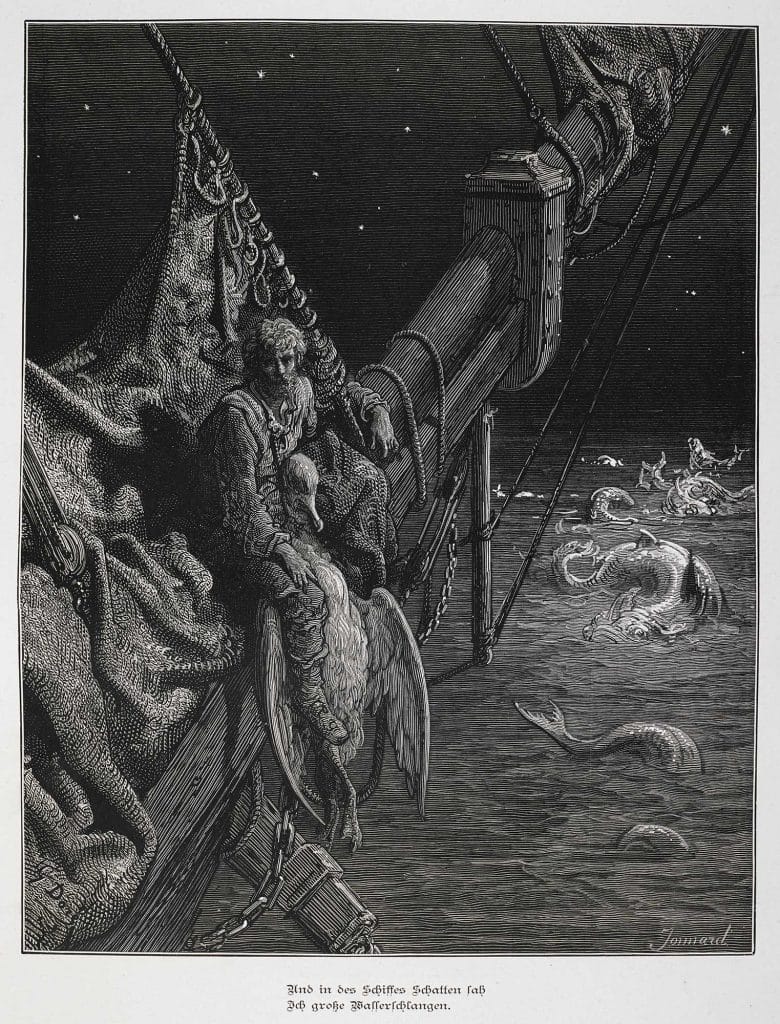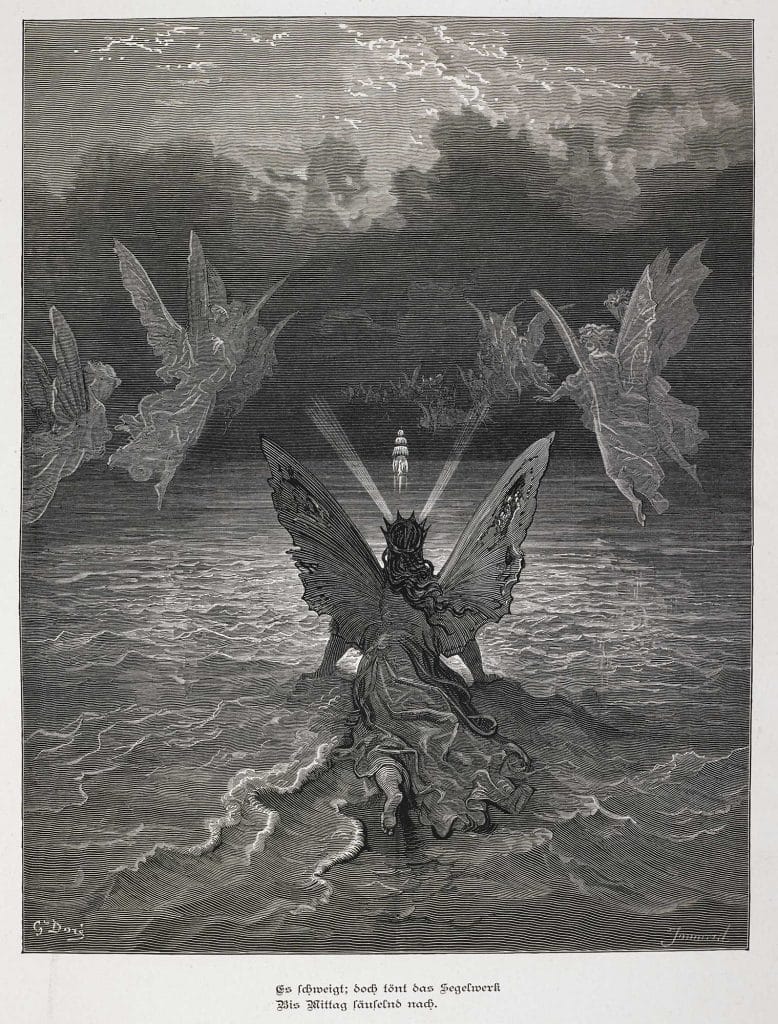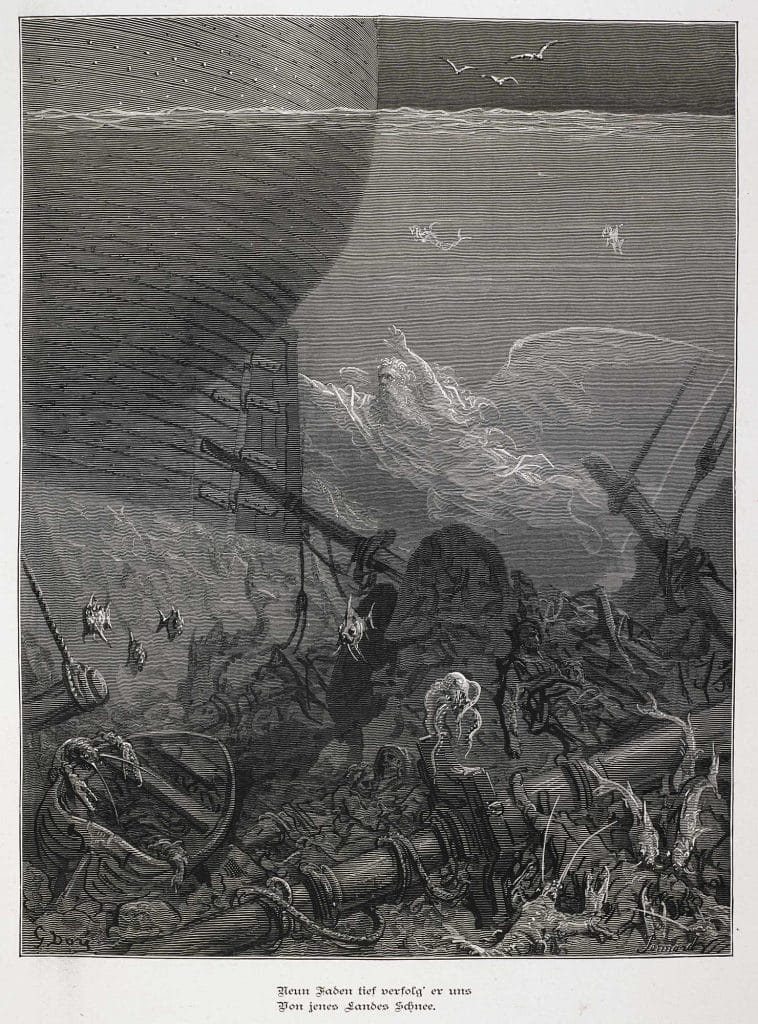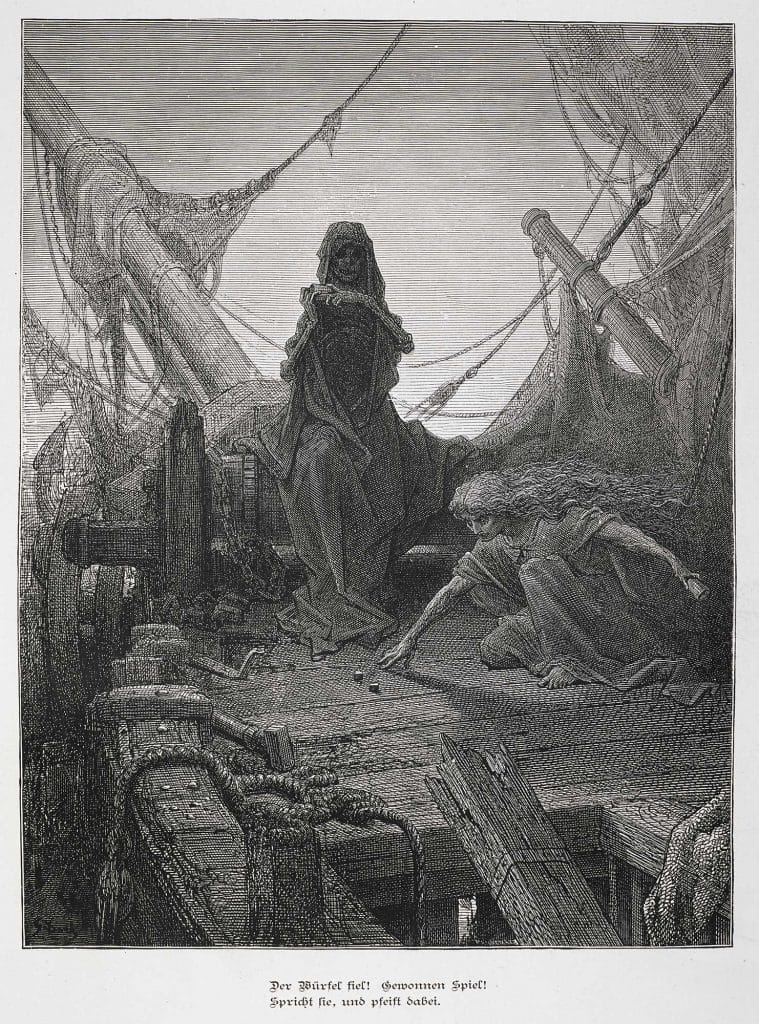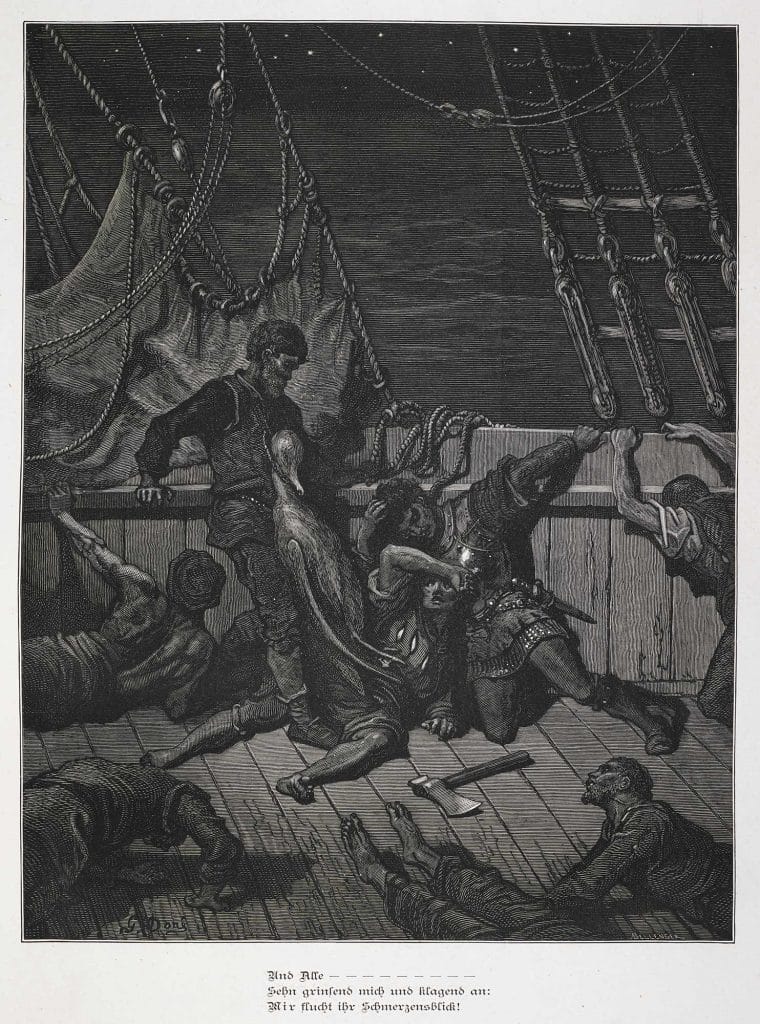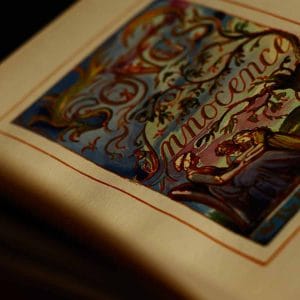
An introduction to The Rime of the Ancient Mariner
Dr Seamus Perry describes the origins of ‘The Rime of the Ancient Mariner’ and considers how Coleridge uses the poem to explore ideas of sin, suffering and salvation.
A failed collaboration
In the Autumn of 1797, Coleridge was nearby William Wordsworth and his sister Dorothy, in north Somerset; and, despite his wife and young child, he spent as much time as he could with the Wordsworths. Both men, still in their 20s, were published poets, though neither had achieved anything approaching commercial success and money was tight; so, when the three of them decided to go off on a walking tour across the Quantock Hills towards the sea they had to think about funds. They set out, imprudently, at half past four on a November evening, and the poets’ conversation promptly fell, as Dorothy recorded, in a letter on 20 November 1797, to ‘laying the plan of a ballad’. For ballads were fashionable and they hoped to sell their work to a magazine. Much later in life, Wordsworth would recall his own contribution to their collaborative work:
certain parts I myself suggested; for example, some crime was to be committed which would bring upon the Old Navigator, as Coleridge afterwards delighted to call him, the spectral persecution, as a consequence of that crime and his own wanderings. I had been reading in Shelvocke’s Voyages, a day or two before, that, while doubling Cape Horn, they frequently saw albatrosses in that latitude, the largest sort of sea-fowl, some extending their wings twelve or thirteen feet. ‘Suppose,’ said I, ‘you represent him as having killed one of these birds on entering the South Sea, and that the tutelary spirits of these regions take upon them to avenge the crime.’ The incident was thought fit for the purpose, and adopted accordingly. I also suggested the navigation of the ship by the dead men, but do not recollect that I had anything more to do with the scheme of the poem. [1]
Shelvocke’s book was entitled A Voyage Round the World, by Way of the Great South Sea. Wordsworth’s remarks are self-deprecating; but at first sight it is difficult to see what else of much consequence there is to the ‘scheme of the poem’ besides his contribution – a crime that revolves around the killing of an albatross, and the consequent persecution of a wandering life in a ship of ghoulish horrors.
Nevertheless, although they attempted to pursue the poem together, it was Wordsworth who soon felt himself out of the place in the enterprise: as he remembered, years later, ‘I had very little share in the composition of it, for I soon found that the style of Coleridge and myself would not assimilate’.[2] Wordsworth withdrew, while something about the story of the poem evidently captured Coleridge, and the poem grew and grew over the next few months. When it was published in the summer of 1798 in Lyrical Ballads, which gathered poems by both writers, it was by far the longest in the book.
Coleridge and the Mariner
What was it about the tale of the poem that caught Coleridge? The answer is partly theological: at this stage of his life, Coleridge was drawn by a roughly pantheistic vision of the world completely suffused with God’s abundant goodness, and many of his most beautiful poems of this period incorporate the thought of that lovely possibility. Nature, in ‘Frost at Midnight’, for example, is described as ‘that eternal language, which thy God / Utters who from eternity doth teach / Himself in all, and all things in himself’ (ll. 60-62). But there is a problem with this otherwise intoxicating view: much of the world seems very short of lovely. On the contrary, it is full of cruelty and arbitrary violence and acts of evil; and in his private notebooks Coleridge, who often made lists of his future projects, duly reminded himself to write one day ‘The Origin of Evil, an Epic Poem’. [3]
That poem never happened; but (among other things) ‘The Ancient Mariner’ happened in its place. It is the story of someone who does something terrible for reasons unknown and pays for it: we never learn why the Mariner shot the bird, but his protracted suffering is described in agonising detail. Some kind of spiritual alleviation seems to come only when the Mariner has changed his attitude towards the creatures of the sea: the sea-snakes which seemed, in the aftermath of his crime, ‘slimy things’ (l. 121) become transformed at the poem’s turning-point into ‘happy living things’ (l. 274). Recognising a joy implicit within natural appearances appears to mark a saving transition from ‘spectral persecution’ to a progressive penance.
Story-telling
But if that moment does indeed set him on to a road to recovery, it is a long and difficult journey; and the man who delivers the poem’s clinching moral – ‘For the dear God, who loveth us, / He made and loveth all’ (ll. 649-50) – seems to reside only very imperfectly within God’s encompassing love, periodically wracked as he is with ‘anguish’ (l. 617) and doomed to an everlasting solitude of rootlessness (ll. 619). How far should we trust the Mariner? His moral seems more than a little banal. There is no doubt that he thinks of his story in terms of a crime, a punishment, and a slow redemption; but does Coleridge mean us simply to endorse his view of the matter?
When he saw the first illustrations of the poem, by David Scott (later published in 1837), Coleridge noted the ‘enormous blunder’ the artist had made in picturing the mariner as ‘ancient’ at the time of the voyage: on the contrary, he ‘had told this story ten thousand times since the voyage’, said Coleridge, implying that part of the poem’s force lies in its exploration of how minds use narrative to try and make sense of their experiences.[4] For what is there, actually, to connect the shooting of the bird to the disasters that ensue, apart from the superstitious insistence of the late-medieval Catholic speaker that it should be so? When Coleridge revised the poem for publication in 1817 he added a new marginal gloss which might promise to clear things up authoritatively: ‘The curse is finally expiated’ (l. 442), it tells us. But is this Coleridge himself in the margin, or a fictional editor, merely adding another layer of interpretation to a poem about trying to make sense of things? Perhaps, this perennially fascinating poem suggests, the ‘Origin of Evil’ resides in the mind’s needy attempts to make sense of experience that is really as arbitrary as the rolling of those dice that appears to determine the Mariner’s fate (l. 192).
脚注
- The Fenwick Notes of William Wordsworth, ed. by Jared Curtis (London: Bristol Classical Press, 1993), p.2.
- Quoted in The Poems of Samuel Taylor Coleridge, ed. by Derwent and Sara Coleridge (London: Edward Moxon, 1852), pp.323-4.
- London, British Library, MS Add. 27901, f. 24v. Also in The Notebooks of S. T. Coleridge, ed by Kathleen Coburn et al, 5 vols. (London: Routledge and Princeton: Princeton University Press, 1957-2002), i, p.174.
- Table Talk Recorded by Henry Nelson Coleridge (and John Taylor Coleridge), ed. by Carl Woodring, 2 vols. (Princeton: Princeton University Press, 1990), i, p.274.
The text in this article is available under the Creative Commons License.
撰稿人: Seamus Perry
Seamus Perry is a Fellow of Balliol College and an Associate Professor in the English Faculty, University of Oxford. He is the author of books and articles about, among others, Coleridge, Wordsworth, Tennyson, Matthew Arnold, T S Eliot, and W H Auden.
